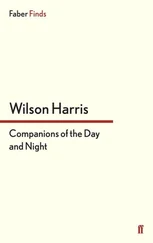Another elaborate description concerns the Lake of Gennesareth with its surrounding area, which reminds one of Herodotus’s descriptions of exotic regions. Josephus draws attention to the unique species of fish that live in the lake and to the strange fact that the river Jordan runs straight through the middle of it (3.508–509). He includes a short excursus on the sources of the river Jordan. The surrounding district is “remarkable for its natural properties and beauty” (3.516). It supplies all kinds of fruit for no less than ten months a year and is being watered by a spring which some hold to be a branch of the Nile (3.516–520). The description implies that by his conquest Vespasian managed to turn an exotic nation at the edge of the inhabited world into a well-organized Roman province. Josephus follows Vespasian’s campaign step by step and also describes Peraea, Samaria, Judaea, and the kingdom of Agrippa (3.35–58). As indicated already in the prologue, the conflict culminates in the siege and destruction of Jerusalem, described in detail in books 5 and 6.
Josephus’s most elaborate description of all concerns Jerusalem and its temple ( BJ 5.136–247). Jerusalem is not only of central importance for thematic reasons (Tuval 2013), but the city also forms the center of Josephus’s geographical system. Unlike other descriptions of cities in Josephus the passage is written in the past tense (cf. BJ 2.188–191; 3.35–58, 70–109, 158–60, 506–521; 4.3–8, 451–475, 476–485, 530–533, 607–615). Probably, Josephus wanted to point out that the city no longer existed during the time of writing (Mader 2000: 155–156; Chapman 2005: 298; Van Henten and Huitink 2012: 210; Gelardini 2014: 89–100). Josephus describes Jerusalem by starting with its periphery and then moving on to the center. He first mentions the geographical setting of the city on two hills as well as the hill on which the temple was built (5.136–141) and then continues to outline the circuit of its three walls with their towers, which are described in great detail (5.142–183). Moving on to the center, the narrator finally turns his attention to the temple itself and the adjacent Antonia fortress (5.184–247; Gussmann 2008: 327). Josephus describes the temple in great detail at the height of its splendor, presumably the way it looked just before it was destroyed. Gradually zooming in, the narrator guides an anonymous witness from the outer court to the inner courts and finally into the sanctuary itself. He ends with a description of the altar, the officiating priests, and even the high priest’s garments. Measurements are given throughout, the functions of each component part are clarified, and the costly materials used are mentioned time and again, with an emphasis on color and the shiny metal surfaces. For example, the exterior of the temple, which “wanted nothing that could astound either mind or eye,” is said “to have appeared to strangers approaching from a distance like a snow-clad mountain,” while people close to it had to avert their eyes because they were blinded by the gleaming gold with which it was covered (5.222–223). The narrative function of the elaborate description of Jerusalem and its temple in book 5 is to enhance the reader’s awareness of what was at stake when the siege of Jerusalem began and of what was lost when the temple burned down because of a fire that might have been caused by the Jews themselves (6.249–253; further discussion: Barnes 2005: 132–135; Rives 2005: 146–148). Josephus apparently wanted to preserve and visualize the memory of Jerusalem and its temple as a detailed monument in writing (Gelardini 2014: 89–100).
Friendly Kings of the Romans
Josephus is an important source about persons who belonged to local elites in the Near East and acted as so-called friendly kings of the Romans (Braund 1984; Jacobson 2001; Kokkinos and Politis 2007; Kaizer and Facella 2010; see also Chapter 31). Herod the Great, to whom Josephus devotes several books, is the historian’s prime example of such a king, but he does mention other friendly kings. Several friendly kings are mentioned in a report of a visit of five kings who came to visit Agrippa I in Tiberias (in 43 or 44 CE), because they admired him, as Josephus says: King Antiochus (IV) of Commagene, King Sampsigeramus (II) of Emesa, King Cotys of Armenia Minor, Agrippa’s brother Herod (Herod IV), King of Chalcis, and King Polemon (II) of Pontus ( AJ 19.338–442). Together these kings controlled territories stretching from Judaea and Idumea in the South to Chalcis and Emesa within Syria, up to Commagene and Pontus by the Taurian Mountains and the Black Sea in the North – all important areas along the Roman border. These six kings were all installed by Claudius and obviously had common interests. They were also connected to each other by marriage arrangements. Agrippa’s daughter Drusilla and his brother Aristobulus (Aristobulus V), for example, were both married to children of King Sampsigeramus II ( AJ 18.135; 20.139; Schwartz 1990: 138; Kokkinos 1998: 315, 321). However, Marsus, the Roman governor of Syria, happened to be around and he was not amused by the meeting in Tiberias and required the kings to return to their territories without delay. Perhaps he was afraid of a pact against Rome or he was worried about the Parthian frontier, for which he was responsible but also needed the loyal support of these kings. Another explanation would be personal: the Syrian governor may have considered Agrippa to be a threat to his own position as most important Roman in the East (Schwartz 1990: 137–140; cf. Kokkinos 1998: 300).
Josephus’s Herod narratives provide valuable information about friendly kings along the eastern frontier of the Roman Empire and their interactions with their patrons. Herod the Great’s official status in the empire was rex sociusque et amicus (“king, ally, and friend”). Originally, Herod was a commoner who took over the power from a well-established local royal dynasty, as King Polemon of Pontus, King Amyntas of Galatia, and King Archelaus of Cappadocia did. Mark Antony must have supported them because of their outstanding qualities as leaders and organizers, as Herod’s early career suggests ( BJ 1.203–285; AJ 14.158–184, 268–305, 324–390; Buchheim 1960: 51–53, 56, 58–59). Herod was successful as king because he had a good and mutually beneficial relationship with his Roman patrons: first with Mark Antony, who settled the Roman affairs in the East, and then, after the Battle of Actium in 31 BCE, with Octavian, later named Augustus. Josephus indicates in both The War and The Antiquities that Herod was a “friend” of his first patron Mark Antony (e.g. BJ 1.386, 390; AJ 15.131, 162, 183, 189, 195, 409), and afterwards of Augustus (e.g. BJ 1.394; AJ 15.193, 195, 199). During Augustus’s reign a third Roman high official, Marcus Agrippa, acted as go-between for Herod and the emperor. In War 1.400 Josephus suggests that Herod had a close relationship with Agrippa as well as with Augustus himself: “but what was greater than all this in Herod’s eyes was that next after Agrippa, he enjoyed Caesar’s [i.e. Augustus’] special favor, and next after Caesar, he enjoyed Agrippa’s [special favor].” That Herod actually was a close friend of Augustus and Agrippa is less plausible for Augustus – who met Herod only a few times – than for Agrippa, who is described as Herod’s “friend and companion” in Antiquities 15.350 (see also AJ 15.318, 361, and 16.12–15; Richardson 1996: 226–234).
The Herod narratives show that returning favors was expected by the relationship between a friendly king and his Roman patrons. Herod frequently applied this practice (e.g. BJ 1.242, 393, AJ 15.5). In War 1.393 Josephus states, for example, that Herod placated Octavian with gifts. Mark Antony rewarded Herod’s loyalty also by favors. He made him a prominent guest during banquets and involved him in his judicial decisions ( AJ 15.77; Braund 1984: 83; Vössing 2004). The relationship between a friendly king and his patrons was not only based on mutual beneficiality, but also on mutual trust ( pistis ) and loyalty ( eunoia ). The section on Herod’s perilous meeting with Octavian after the Battle of Actium and its follow-up imply that ( AJ 15.187–201; esp. 15.193–194, 201). Escorting Antony or Octavian for part of their military campaigns was an obvious service from Herod as friendly king (e.g. AJ 15.80, 96, 168, 199–201). Herod honored his patrons by founding or renaming cities after them. For the emperor he topped this off by erecting temples or altars and by organizing games in his honor (e.g. BJ 1.407, 414–41; cf. Suetonius, Aug . 59–60). Herod expanded and fortified the city of Samaria, which he renamed as Sebaste (= Augustus) in honor of Augustus ( AJ 15.294, 296; cf. also the foundation of Caesarea Maritima in Augustus’s honor, AJ 15.331–341). Archelaus I of Cappadocia and Pythodoris of Pontus also renamed cities as Sebaste (Braund 1984: 108; Kienast 1999: 469–470). The sons of friendly kings were often educated in Rome from the times of Augustus onward, as a passage in Suetonius indicates ( Aug . 48; Braund 1984: 9–17). Josephus confirms this practice by reporting that: “… when Sebaste was already built as a city, he [Herod] decided to send his sons Alexander and Aristobulus to Rome in order to meet with Caesar” ( AJ 15.342–343). The obvious aim of this meeting is the Roman education of the boys, but Herod may have had additional motives for this move, such as carrying over the close relationship with the Roman patrons to the next generation and preparing them for their own career as friendly ruler (Braund 1984: 11). The particular relationship between Herod and Augustus remained intact as long as the king did not exceed his authority, as another section in Josephus indicates. Herod jeopardized his position when he launched a punitive expedition against the Nabataeans without having Augustus’s permission ( AJ 16.271–293).
Читать дальше












